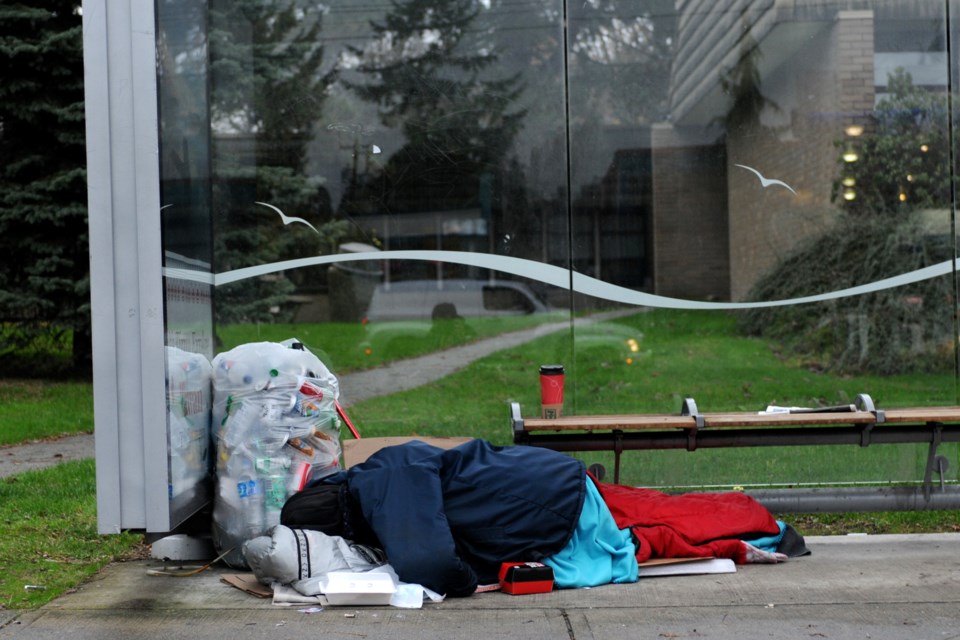The number of homeless individuals jumped 80% in Burnaby, according to preliminary data from the 2020 Metro Vancouver homeless count.
The numbers went down in Vancouver, White Rock, Maple Ridge-Pitt Meadows and Delta, while more homeless were counted in Surrey, Langley, Burnaby, Richmond and the North Shore.
Overall, the count identified 3,634 individuals experiencing homelessness in the region. That’s 29 more than were counted in the last survey, in 2017.
The count registered 124 people as homeless in Burnaby, up from just 69 in the 2017 count. This was the largest percentage jump of any of the cities in the count.
This year’s count was conducted by about 1,200 volunteers on March 3 and 4 before the height of the COVID-19 pandemic.
The number of homeless under the age of 25 decreased from 16% to 8%, while 25% of individuals identified as homeless were over the age of 55 — that’s up from 23% three years ago.
Lorraine Copas, the chair of the community advisory board that oversees the count, said raw numbers don’t tell the whole story.
“It is important to recognize that behind each of the statistics is someone who is living without a place they can call their own,” she said. “The homeless count provides important insight into the diversity of individuals experiencing homelessness as well as the different challenges and circumstances they face.”
As well, the count’s early results show about a third of the region’s homeless individuals are Indigenous.
“The Indigenous community continues to bear the brunt of this crisis,” said David Wells, the chair of the Indigenous Homelessness Steering Committee. “Homelessness continues to be a critical issue for which we have not found a solution.”
For the first time, the count also identified homelessness amongst various racial groups. It found 6% of the homeless identified as Black, followed by South Asian and Latin American, both at 3%.
“The data should jolt us into action to ensure radicalized communities… receive the culturally and racially appropriate programs and services to provide better pathways to well-being,” said June Francis, the co-chair of the Hogan’s Alley Society board of directors.
The full homelessness report will be released in the fall.
- With files from Mario Bartel



